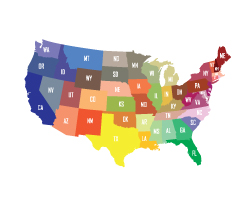Research has shown that even low blood alcohol concentration (BAC) impairs driving skills and increases crash risk (BAC is the proportion of alcohol to blood in the body. In the field of traffic safety, BAC is expressed as a percentage reflecting grams of alcohol per deciliter of blood, for example, 0.10 percent is equivalent to 0.10 grams per deciliter). New information about BAC and impairment has led to policy changes, which have contributed to declines in alcohol-related crashes and fatalities. This article examines some aspects of alcohol-induced impairment and reviews selected strategies designed to reduce alcohol-related crashes and repeat drinking and driving offenses.
BAC and Impairment
A review of 112 studies concluded that certain skills required to operate essentially any type of motorized vehicle become impaired at even modest departures from zero BAC. At 0.05 percent BAC, most studies reported significant impairment. By 0.08 percent BAC, 94 percent of the studies reported impairment. Some skills are significantly impaired at 0.01 percent BAC, although other skills do not show impairment until 0.06 percent BAC. At BACs of 0.02 percent or lower, the ability to divide attention between two or more sources of visual information can be impaired. Starting at BACs of 0.05 percent, drivers show other types of impairment, including eye movement, glare resistance, visual perception, and reaction time. Moskowitz and colleagues reported that alcohol significantly impaired driving simulator performance at all BACs starting at 0.02 percent.
The risk of a fatal crash for drivers with positive BACs compared with other drivers (i.e., the relative risk) increases with increasing BAC, and the risks increase more steeply for drivers younger than age 21 than for older drivers. Between 0.08 and 0.10 percent BACs, the relative risk of a fatal single-vehicle crash varies between 11 percent (for drivers age 35 and older) and 52 percent (for male drivers ages 16-20).
Other forms of transportation also have been investigated. Studies using an automated device that simulates actual flight conditions have shown pilot performance to be impaired at BACs as low as 0.04 percent and to remain impaired for as long as 14 hours after pilots reached BACs between 0.10 percent and 0.12 percent. Another experiment using a simulated environment showed that experienced maritime academy students with BACs of 0.05 needed significantly more time than did other students to solve a problem related to power plant operation onboard a merchant ship and were not aware of their impairment.
Factors That Influence Alcohol-Induced Impairment
Alcohol Tolerance. Research suggests that the repeated performance of certain tasks while under the influence of alcohol can make a person less sensitive to impairment at a given BAC. However, although impairment from alcohol may not be evident during routine tasks, performance would worsen in novel or unexpected situations.
Age. Based on miles driven, the highest driver fatality rates are found among the youngest and oldest drivers. Compared with the fatality rate for drivers ages 25-69, the rate for 16- to 19-year-old drivers is about four times as high, and the rate for drivers age 85 and older is nine times as high. Among male drivers younger than age 21, a BAC increase of 0.02 percent more than doubles the relative risk for a single-vehicle fatal crash. Women in this age group, however, have lower relative risk than do men at every BAC. Young drivers’ greater crash risk is attributed, in part, to lack of driving experience coupled with overconfidence. The presence of other teenagers in the car may encourage risky driving and is associated with increased fatal crash risk among young drivers.
Alcohol is less often a factor in crashes involving older drivers. In 1999 drivers age 65 and older killed in crashes were the least likely of any adult age group to have positive BACs. Nevertheless, a person’s crash risk per mile increases starting at age 55 and exceeds that of a young, beginning driver by age 80. Factors associated with unsafe driving include problems with vision, attention, perception, and cognition. Older drivers with alcoholism also are more vulnerable than are other elderly drivers to impairment and have greater crash risks.
Sleep Deprivation. Drowsiness increases crash risk, and research shows that BACs as low as 0.01 percent increase susceptibility to sleepiness. Alcohol consumption also increases the adverse effects of sleep deprivation. Subjects given low doses of alcohol following a night of reduced sleep perform poorly in a driving simulator, even with no detectable alcohol in the blood.
Prevention Strategies
Raising the Minimum Legal Drinking Age (MLDA). The National Highway Traffic Safety Administration (NHTSA) estimates that raising the MLDA to 21 has reduced traffic fatalities involving 18- to 20-year-old drivers by 13 percent and has saved an estimated 19,121 lives since 1975. Twenty of twenty-nine studies conducted between 1981 and 1992 reported significant decreases in traffic crashes and crash fatalities following an increase in MLDA. Three studies found no change in traffic crashes involving youth in various age groups, and six studies had mixed results. Laws that prohibit selling or providing alcohol to minors generally are not well enforced, but community efforts to increase MLDA enforcement can be effective.
Zero-Tolerance Laws. These laws, which set the legal BAC limit for drivers younger than age 21 at 0.00 or 0.02 percent, have been associated with 20 percent declines in the proportion of drinking drivers involved in fatal crashes who are younger than age 21 and in the proportion of single-vehicle, nighttime fatal crashes among drivers younger than age 21. Based on driver surveys, researchers have reported that young drivers may be more successful than are older drivers in separating drinking from driving, and these researchers have suggested that this difference could be attributable to zero-tolerance laws.
Lower BAC Limits for DUI Offenders and Transportation Workers. In Maine, a law lowering the legal BAC limit to 0.05 percent for anyone convicted of Driving Under the Influence (DUI) has been found to reduce significantly the number of fatal crashes among this population. Because drinking and driving by transportation workers threaten public safety, the Federal Government prohibits commercial truck drivers, railroad and mass transit workers, maritime employees, and aircraft pilots from operating their vehicles with BACs of 0.04 percent or higher.
Reducing Repeated DUI Offenses
License Suspension. Laws that allow for administrative license suspension (ALS) at the time of arrest have been found to reduce both alcohol-related fatal crashes and repeat DUI offenses. A study of an Ohio ALS law found that first-time and repeat DUI offenders who had their licenses immediately confiscated had significantly lower rates of DUI offenses, moving violations, and crashes during the next 2 years compared with DUI offenders convicted before the ALS law went into effect.
Although research shows that license suspension reduces repeat DUI offenses, there is also evidence that up to 75 percent of suspended drivers continue to drive. Evaluation of Oregon’s “zebra sticker” law suggests that marking the license plates of vehicles driven by unlicensed drivers deters both driving while suspended (DWS) and DUI by suspended drivers. A similar law in Washington State was enforced differently and had no effect.
Vehicle Impoundment/Immobilization. Two studies of an Ohio law that allowed for vehicle immobilization or impoundment for multiple DUI offenders both found that offenders whose vehicles were immobilized or impounded had lower recidivism rates compared with other offenders while their vehicles were not available and after they were returned.
Source: National Institute on Alcohol Abuse and Alcoholism







